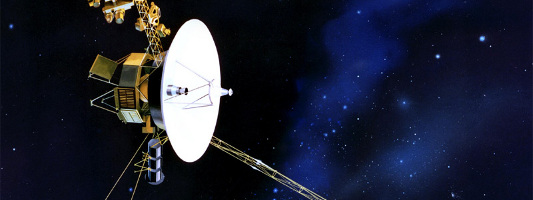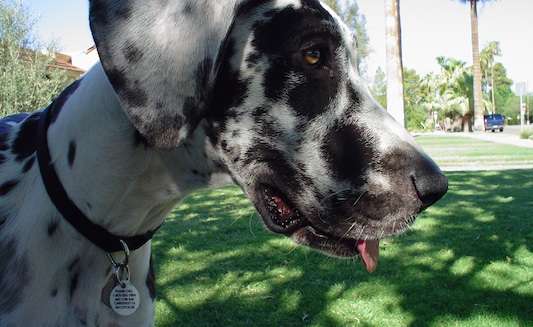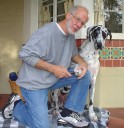When the Coyote Calls – Part II
This story begins with When the Coyote Calls
“Ron?”
“Kaister meister! What’s happening?”
I have always loved the way Ron greets me, nearly the same since I was a kid in Springfield, South Dakota. He made me recite supercalifragilisticexpialidocious before I was offered one of the cookies his mother had baked. He was a college student then, living in a dormitory my parents managed.
“I’m doing well. A crazy night and unusual morning, but I am ok.”
“Bets and I just got back from a five mile hike, up to the top of Table Mountain, down the backside, and home again. I did the whole thing with fifty pounds in my pack. Not bad for an old man, huh?”
“Nope. You push sixty back a dozen years.”
“Well, we’ll just see how long I can keep this up. My doctor says I’m in a good shape and I can still carry a hundred pound pack in the Brooks Range, so I guess I’m do’n ok.”
In the background I heard Betsy’s voice, “Hi Kai!”
Raising my voice a bit so it would carry across the room from the speaker phone, “Hi Betsy!”
Ron picked up the phone, disconnecting the speaker, “So, what’s up?”
“Well, how close have you come to a coyote?”
“Oh, I don’t know Kai. A few times, when the wind was blowing the right direction, I surprised one or two,” he paused then his voice raised excitedly, “But there was this one time when I was up in the Wind Rivers and came over a ridge, just me and a buddy from back in the Dakotas. Right there, in front of us there was a whole mess of ’em. Maybe seven or ten. More than we had ever seen at one time, playing, frolicking in the meadow. But boy, you should ‘ve seen them jump up and run when they saw us com’n. That was pretty cool.” I could hear the smile in Ron’s voice, his incredible passion for all things wild impossible to contain. As a hunter, writer, photographer and conservationist he felt more deeply about preserving what remains of the natural world than anyone I had ever known.
“Do they, do the coyotes ever attack humans?”
“Historically, no, not really. Not before we industrialized this continent and fenced it all in to run our cattle. But what’s happened now is that the coyote, Canis latrans, is actually spreading, increasing its range as the human population encroaches on its territories. There are more reports of coyotes eating domestic dogs and cats and even,” Ron paused in the way a storyteller sets up the climax, “even going after humans, mostly toddlers, from time to time. East Coast and Southern California. It’s happening with mountain lions too, getting cyclists or joggers. But yeah, there is more confrontation now. It’s just gonna to get worse in urban areas, I’m afraid.”
“Sad,” I tried not to show the fear in my voice. I looked from the kitchen to the living room were the coyote yet lay, curled in front of the stove despite the lack of fire inside.
“Now this is where it gets really interesting. Genetic tests have shown that coyotes and wolves are interbreeding more now than ever before. And in Oklahoma and Texas, it’s really crazy. Coyotes and domestic dogs are interbreeding too. That really changes things as coyotes become fertile only once per year, but domestic dogs can breed all year round. Their offspring are less afraid of humans, more aggressive and the populations are growing.”
“Amazing. All because of humans?”
“Yeah. We really screw things up, over and over again. But we never realize it until it’s too late. But those coyotes, you don’t have worry about them going extinct. They adapt quickly. Did ya know ‘Coyote’ means ‘the trickster’ in Spanish? They used to be diurnal predators, but due to the human pressure, they changed to be mostly nocturnal?”
“No, I thought they were always nocturnal!”
“Nah, that’s relatively recent. Amazing, isn’t it!?”
I didn’t respond, but noticed the coyote was now stretched out. Was he listening?
“So, what’s got you so interested in coyotes?”
I hesitated, not certain what to share, “Well, I–, um, you know, nearly every night I hear the coyotes calling not far from the cabin. Sometimes up in the pastures.”
“Yeah, that’s really neat. I never tire of hearing them either.” Again, Ron’s passion for the living, non-human world came through in the excitement of his every word.
“Well, last night, I swear they were right off the porch. I mean, right there in front of me. I could hear everything, even the growling and chewing. It was amazing.”
“Oh man! I’ve heard that too, usually from within a tent but sometimes on the back porch here in Boise. So, did you get a good look at ’em? What’d they catch?”
“No, it was too dark, the sky clouded over and the moon in its new phase. But,” I hesitated again, “but one of the coyotes, he was injured. It looks like he was attacked.”
“What? What happened?”
“Well, he came up on the porch after the rest left. He’s missing an ear, has a big hole in his side, and one of his paws is pretty messed up.”
“He’s on your porch! Oh man!,” now Ron was really excited, “That’s really strange. Usually, they’d just run off, no matter how bad the injury. They sure don’t like being touched by humans.”
“So, you’ll think he’ll recover?”
“Well, I am just surprised he didn’t run off. That scares me more than anything. Might be diseased or something. It’s just not normal for a coyote to hang out with humans. Hell, I’ve seen a coyote with a leg blown off run for miles, heal and come back the next year. One of the fattest, well-furred coyotes I ever saw was flop’n a hind leg halfway up the thigh while hunting prairie dogs in Wind Cave National Park,” he paused for emphases, “at thirty degrees! He was still mov’n so fast, I couldn’t have caught him on a gravel road with my mountain bike.”
“Incredible!”
“But, if he doesn’t recover, and don’t run off, you gotta put him down Kai. Nothing else to do.”
“I had a feeling you’d say that.”
“Kaister. Either he’s gonna get up and run, starve, or get eaten by something bigger. You can shoot ‘im, make it clean and quick, and then take the carcass a few miles away and let him be food for another scavenger.”
“I know. I know. That’s how it works. You know I am not opposed to that, even though I am a vegetarian,” I paused, smiling even though Ron could not see me, “But this time, I just can’t.”
“Well, you can’t keep him. He was not brought up by humans. Even then they turn mean, eventually. Like lion and bear cubs too. It’s just too dangerous.”
“I know. It takes generations, but this one,” I leaned around the corner again and the coyote was gone, “Oh shit! He’s gone! I gotta go. Sorry. I’ll call you later.”
“Wha-?” I hung up and rounded the corner. He was no where to be seen. I ran to the door and pressed it open, stepping quickly onto the porch again.
“You gonna shoot me now? Put me out of my misery?”
He was there, where I had found him last night, sitting up, the bandaged leg protruding from beneath his torso. He was beautiful, even in his injured state. Stunning to look at in the sun.
“No. No. Of course not. I just wanted– I wanted to know more. Ron is a lifelong conservationist, an expert in his field. He, more than anyone I know, gets what’s going on out there,” I waved my outstretched arm, gesturing to the pasture, the forest, and mountains.
“Out there?” the coyote asked, no intent to hide his sarcasm, “You mean over there, between those trees,” he pointed with his snout and nose, “Or there, in that valley. Or the next ridge over?”
I looked to each of the places he had noted.
“What about here, aquí, between you and me, on this porch, inside su casa. And your farms, your cities, your landfills? Does he get what’s happening there?”
“Yes, he does. He understands, more than anyone I know.”
“You’ve known him for a long time, have you?”
“Since I was just three years old. He is like a second father to me.”
“Bueno. We need more like him. But don’t worry about me any more. You did good last night,” looking down at his paw and to his side, at the bandage holding the gauze in place over the hole in his side, “Lo hiciste bien.”
“I need to change those bandages.”
“Su amigo Ron, he’s right, you know, I will starve, eventually, if I don’t heal. The pack, it’s not like you humans, we can’t care for those who can’t pull their own. It’s not that we wouldn’t, we just can’t. It’s not what we do. Nunca tenemos. Nunca lo hará.”
“Did they do this to you?” pointing to his injuries.
“Yes, the pack leader. He did this, the others formed a circle so I could not escape.”
I was shaken, images in my mind too terrible to hold on to “But why?”
“Because of what I believe I must do.”
I waited, saying nothing.
“Because I came to you. Because of where we are going, together.”
“Are they angry you are speaking to me?”
“It’s not about speaking. For thousands of years we spoke to humans, until the new people arrived,” he paused, considering what to say next, “It’s about the befriending your people. Your species has taken nearly everything we are, all that we were and forced us to change.” He looked up at me, “No one likes to change.”
I nodded, adding, “Like Ron said, you are mating with domestic dogs, spreading into urban areas and eating our pets.”
“Pets!” he laughed, “The concept has always made me laugh.” And then with a very serious tone, “Don’t get any ideas human, I am not your pet. You will not be feeding me food from your table!?” His voice trailed into a snarl and I sensed his pride. “No, you will kill me, in the end, and carry my body to a higher place for the bear and the birds and the worms to consume.”
I started to respond, but he bared his teeth and snarled again.
I went back inside to gather the medical kit, tape, and gauze. The coyote was patient and showed no pain when I reopened, cleaned again, and repacked the area where his rib had been exposed. It was healing already, the blood coagulating, a light brown and pink crust forming with a little fluid in the center. But the fluid was clear, not white, and the pink was not spreading. No infection, from what I could tell.
What was left of his ear was also drying, strands of fur helping to form a scab more quickly than if it were clean. Very little liquid yet oozed from the wound.
The coyote stood, shook his coat free of the pine needles which had stuck to his fur, and thanked me. Then he continued, “There is a divide among our kind, a kind of decision being made. We are not all in agreement, some of us willing to risk our lives to take a risk.”
“You risked your life by coming to me?”
“No. That is the easy part. What lies ahead, that is the risk we will both take, together.”
This story continues with Part III
Copyright © Kai Staats 2013


